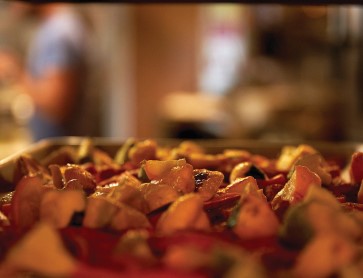Alto-Shaam
Guide to Reducing Food Costs
Not sure how to reduce your restaurant’s food cost? Explore our guide to learn a few tips about how you can reduce food costs in restaurant management.

When it comes to managing a foodservice operation, much of the difference between success and failure comes down to how well you control food costs. Not only is food cost one of the biggest line items in the profit and loss statement, it’s one of the easiest to lose control of.
Still, reducing food costs doesn’t have to be a mystery. By following a few simple steps, devoting some time every day to the process, and using the right equipment, your restaurant can lower food costs and improve your bottom line.
Here are a few tips to reduce food costs in restaurant management.
Know your costs
It sounds obvious, but foodservice operators often don’t know what percentage of an item’s price on the menu covers the cost of the food. It’s especially difficult to track with fluctuating food prices.
Along with knowing the cost of a specific item, you should also know how it fits into the menu mix. Ultimately, operators should be able to calculate what a perfect (or theoretical) food cost should be as a comparison with what it actually is when you do your inventory. Too much variance indicates issues such as theft or waste that are eating into your bottom line.
When it comes to tips and tools for controlling your food cost, it won’t hurt to promote higher-margin items to balance sales of items with lower margins.
Watch your inventory
When it comes to inventory levels, it’s important to have enough product on hand to carry you through until the next delivery. Running out of a signature menu item means either purchasing supplies at the local grocery store or disappointing your customers by not having the menu items they desire.
It’s equally as important, though, to avoid having too much product on hand. An excess amount of perishable items such as produce or baked goods will guarantee some of those items will end up in the trash. Also, having too much of an item invites theft that may go unnoticed until the next inventory. One option could be dehydrating perishable items to use as spices or flavorings for other dishes. However, the money you spend on keeping excess inventory on hand would be of better use in the bank earning interest.
Go through your sales records and calculate the average usage of each item between deliveries over the course of a month or six weeks. Add 20% to that, and set a “build to” level for each item. If, for example, you use 10 cases of hamburger meat between deliveries, set a “build to” of 12. If when doing inventory you find that you have two cases on hand, ordering 10 cases should carry you comfortably between deliveries without having an excess amount on hand.
If you’re ordering produce, have it delivered as frequently as possible to ensure it’s always fresh.
Use the right equipment to reduce waste
One of the most effective ways to reduce food costs is to minimize waste during the cooking and holding process. Leaving items in an oven for too long or ovens with uneven cooking technology, for example, can result in the waste of part of or a whole batch of product. And cooking too much in advance can result in dried out food that disappoints customers. In both cases, food waste could have been prevented with the right equipment solutions.
Equip your kitchen with an oven that assists in managing food costs. Alto-Shaam’s Vector® multi-cook ovens are ideal for high-volume batch cooking and provides consistent, precise cooking while simplifying the steps in food production. The oven’s cloud-based remote oven management system features an easy-to-use dashboard for operators to seamlessly push and pull recipes and view oven status, ensuring that items are cooked to perfection the same way every time across all locations.
If you’re cooking product in advance for service, Alto-Shaam’s variety of heated holding solutions perfectly maintain food quality. Their exclusive Halo Heat® technology delivers precise, even holding without harsh heating elements that can dry out food. Operators can keep product at its perfect serving temperature and hold it for hours without overcooking or drying out, which helps further increase shelf life and quality of food while reducing waste. As an added bonus, select heated holding cabinet models have earned the EPA's ENERGY STAR® certification, significantly saving on energy costs.
These are just two Alto-Shaam products that can help reduce both food and labor costs while at the same time preparing delicious food perfectly, again and again. Contact our experts to learn more.
